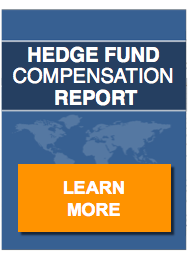Hedge fund fees are often higher than those of mutual funds and they frequently involve both a management fee and a performance fee. A commonly-quoted hedge fund fee is “two and twenty”—an annual two percent of assets fee plus 20 percent of the gains over some base return or “hurdle rate.”
The management fee was a basic part of the early hedge fund compensation schemes. These fees are generally determined annually (but don’t often change) as a percentage of the net value of the fund, ranging from one percent to four percent, and are typically paid to the fund manager in quarterly installments. Smaller funds may determine this percentage by seeking to cover the operating costs of management of the fund, while larger funds may offer higher management fee percentages in order to attract and retain greater fund management expertise.
In addition to management fees, hedge fund managers are typically paid a performance fee, calculated as a percentage of the profits gained by the fund under their management. The performance fee is generally around twenty percent of the increase in value over a specified period of time, although some larger management firms have charged as much as forty percent of the profits. Because fund managers are rewarded with performance incentive fees based on net value gains, but are not penalized on losses, some limiting measures are employed by hedge funds as a means of competing for investors, such as high water marks and hurdle rates.
High water marks refer to performance fee policies that specify that the fund manager will only be paid a percentage of the profits if the net value of the fund exceeds the previous highest value achieved by the fund. A fund must actually make up losses before it can charge an incentive. In other words, if a $1,000,000 investment loses 50% in the first year (leaving $500,000), then earns 100% the following year, it cannot charge an incentive fee the second year because the investment is only back to where it began. Some investors feel the high-water mark can lead to the manager taking on more risk, if he is in a position where he has to play catch-up. Others would not invest without it.
Hurdle rates, also referred to as minimum acceptable rates of return, are also used as a determining factor for hedge fund performance fees, by measuring fund performance against an external benchmark. Where hurdle rates are applied, performance fee percentages are not paid to the fund manager unless the rate of return on the fund meets or exceeds that benchmark rate. The rates used for comparison may be a pre-determined percentage, or some other financial industry measure such as the rate of return on US treasury bills, or other rates of return in the financial industry. Guaranteeing that performance fees will not be levied helps to reassure investors that they will be compensated somewhat if the return fails to exceed that of other investment options.
In addition to management fees and incentive or performance fees, some hedge funds also charge withdrawal fees when money is removed by an investor from a hedge fund account. These fees usually are applied to a certain time period, such as withdrawals within a set number of years of the initial investment, or to withdrawals above a certain amount, usually defined as a given percentage of the investment. Withdrawal fees are meant to discourage casual withdrawals from the fund assets, in order to allow fund managers to employ longer-term strategies. Other funds address this problem with lock-up periods, which refer to a minimum amount of time that must pass after the initial investment before the investor may withdraw money from the fund.
You might also be interested in:
The Difference Between a Mutual Fund and a Hedge Fund
What is a Hedge Fund of Funds?
What are the Legal Issues with Hedge Funds?
How Hedge Fund Sales and Marketing Works
Hedge Fund Transparency and Reporting
What is the Role of the Prime Broker?


